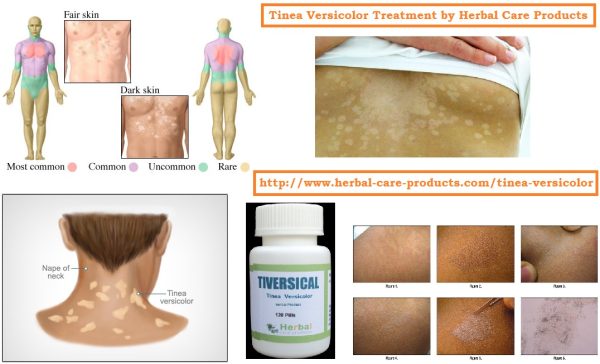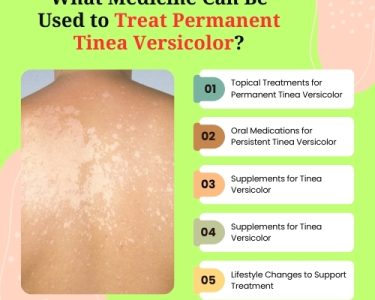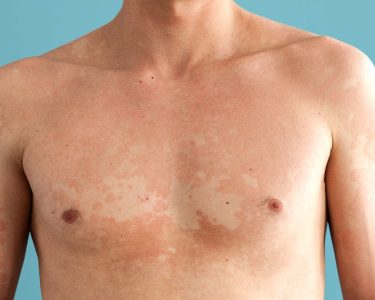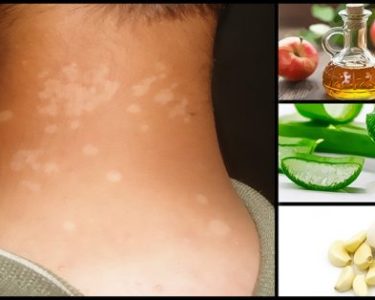What is Tinea Versicolor?
The fungus Malassezia is a type of yeast found on the surface of the skin. It normally doesn’t cause any health problems. In fact, many of the microbiota (or microscopic organisms), including yeasts like Malassezia, that live in large communities on your skin help protect you from infections and other pathogens that can cause harm or disease. They live alongside your body’s cells in symbiotic relationships, with skin cells and tiny organisms supporting and benefiting each other.
Sometimes, however, this yeast can grow out of control and affect the natural color or pigmentation of your skin. When this happens, you may develop patches of skin that are lighter or darker than the surrounding skin. This condition, which isn’t contagious, is known as Tinea Versicolor, or pityriasis versicolor. The condition occurs when a type of yeast from the Malassezia family causes an infection or suppresses your immune system.
What causes of tinea versicolor skin?
Causes for Tinea Versicolor occurs when Malassezia grows rapidly on the surface of the skin. Doctors aren’t sure why this happens. Some factors may promote the growth of this yeast on the skin, including:
- hot and humid weather
- excessive sweating
- oily skin
- a weakened immune system
- hormonal changes
Causes of Tinea Versicolor can occur in people from all ethnic backgrounds, and it’s more common in adolescents and young adults. Adults are more likely to develop tinea versicolor if they visit an area with a subtropical climate.
What are the symptoms of tinea versicolor skin?
Discolored patches of skin are the most noticeable Symptoms of Tinea Versicolor, and these patches usually show up on the arms, chest, neck, or back. These patches may be:
- lighter (more common) or darker than the surrounding skin
- pink, red, tan, or brown
- dry, itchy, and scaly
- more prominent with tanning
- prone to disappear in cooler, less humid weather
Symptoms for Tinea Versicolor that develops in people with dark skin may result in the loss of skin color, known as hypopigmentation. For some people, the skin may darken instead of lighten. This condition is known as hyperpigmentation.
Some individuals who develop Tinea Versicolor Symptoms don’t have any significant changes in their skin color or appearance.
In addition to changes in the color of your skin, you may also experience itchy skin.
Similar conditions
Some conditions with overlapping symptoms, such as vitiligo, are often mistaken for tinea versicolor. However, vitiligo can differ from tinea versicolor in several noticeable ways, including:
- Vitiligo doesn’t affect your skin’s texture.
- Vitiligo usually appears on the fingers, wrists, armpits, mouth, eyes, or groin.
- Vitiligo often forms patches that are symmetrical.
The rash caused by pityriasis rosea is also similar to tinea versicolor, but this rash is usually preceded by a “herald patch,” a lone red patch of scaly skin that appears a few days or weeks before the rash. This rash typically appears in the shape of a Christmas tree on the back. It’s not known what causes this condition. But, like tinea versicolor, it’s neither harmful nor contagious.
What are the risk factors for tinea versicolor?
Various environmental and biological factors can put you at a higher risk for this condition, including:
- a family history of tinea versicolor
- excessive sweating
- a humid, warm climate
- a weak immune system
- taking medications that weaken the immune system
- some types of cancer
When should you contact your doctor?
If you develop symptoms of tinea versicolor, you may choose to treat the condition yourself. Over-the-counter (OTC) antifungal medications can eliminate discolored patches of skin. However, you should contact your doctor if these treatments aren’t effective. You may need a prescription medication to control your symptoms.
How is tinea versicolor diagnosed?
See your doctor if strangely colored patches develop on your skin and you can’t treat them at home. Your doctor will examine your skin and may be able to tell if you have tinea versicolor just by looking at the patches.
If a diagnosis can’t be made by looking at the skin, your doctor may take a skin scraping. A skin scraping removes cells from your skin for testing by scraping the skin gently. The cells are viewed under a microscope to see if they contain the yeast that causes this condition. Your doctor can conduct a potassium hydroxide (KOH) microscopy. In this procedure, your doctor takes a skin sample, places it on a microscope slide with a solution of 20 percent KOH, and looks for yeast or hyphae fungi under a microscope.
Your doctor might also take a biopsy, or tissue sample, of the affected skin and test for fungi on the outer skin layer. A sample of the fungus on the skin can also be tested in a fungal culture to see if you have the condition.
Your doctor may also use a Wood’s lamp to look at your skin. This special machine, which uses ultraviolet light, is held 4 to 5 inches from your skin. If yeast is present, the affected skin will appear yellow or green under the light.
What is treatment of tinea versicolor skin?
If your symptoms aren’t severe, you may choose to treat your condition at home. OTC anti fungal creams or shampoos may be effective for killing the infection. Examples of OTC medications that can be used to Treatment of Tinea Versicolor include:
- clotrimazole (Lotrimin AF, Mycelex)
- miconazole (Monistat, M-Zole)
- selenium sulfide (Selsun Blue shampoo)
- terbinafine (Lamisil)
If you seek medical Treatment for Tinea Versicolor, your doctor may prescribe different Tinea Versicolor Natural Treatment, such as topical creams that can be applied directly to the skin. Examples include:
- ciclopirox (Loprox, Penlac)
- ketoconazole (Extina, Nizoral)
Your doctor may also prescribe pills to treat tinea versicolor, including:
- fluconazole (Diflucan)
- itraconazole (Onmel, Sporanox)
- ketoconazole
How long will it take for your skin to return to normal?
If you’re diagnosed with Tinea Versicolor Herbal Treatment will improve your long-term outlook. However, even after eliminating the infection, your skin may remain discolored for several weeks or months following Tinea Versicolor Natural Remedies. Your infection may also return when the weather becomes warmer and more humid. If your condition returns, your doctor may prescribe medication once or twice per month to prevent symptoms.
How can tinea versicolor be prevented?
It can be difficult to prevent a recurrence of this condition. If you’ve been diagnosed with Tinea Versicolor Herbal Remedies and you’ve successfully treated it, there are steps you can take to prevent future infections. These include:
- avoiding excessive heat
- avoiding tanning or excessive sun exposure
- avoiding excessive sweating
You can also help prevent tinea versicolor by using a prescription-strength skin treatment during times of the year when you’re most susceptible to it.
Source Link :https://www.healthline.com/health/tinea-versicolor#Overview1




